Corsair Interview – Michael Hooper (PM for Cases, Cooling and Fans)
March 8, 2016 | 12:53
Companies: #corsair

bit-tech: So the start-ups we've seen like Ncase are a response to a failing by Big Case?
Michael: I think so. And it's because they can do what we cannot. When we produce a case, we have to sell 100,000 of them a year, minimum. But Ncase is different. I love the M1 – it's very well thought out, beautifully designed and a very smart case but it's $200 because they can only produce 500 a month. Before I started at Corsair, when I was looking to build a system, that was going to be the case I built in. Either that or an Akasa passive case. And yeah, there's not a whole lot out there that's cheap. If Ncase could make 5,000 M1s a month, I'm sure they could sell that for about $100, maybe $120. But yeah, they're definitely responding to an unmet need from the larger case manufacturers.
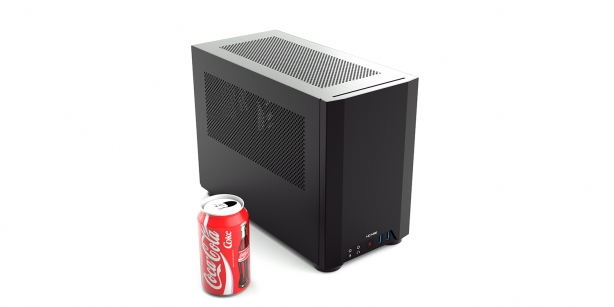
bit-tech: Why haven't the bigger companies stepped up then?
Michael: The problem with designing a mini-ITX case is it has to be great for everybody and that's not something that's easy. It takes a lot of time and effort and since the industry is moving so quickly in the mini-ITX space it's a moving target too. ITX is small but it's seeing the most evolution because the pursuit of small and small-powerful is so much more compelling to the users than it is for your standard case purchaser who just wants to put their stuff in it.
bit-tech: Why does it have to please everyone? Because the market is so small?
Michael: Yes, that is really what it is. We can't go after 10 percent of 10 percent. We would have to go after 50-90 percent for it to make sense for us. But by doing that you make compromises that make it difficult to please as many people as possible... So it's upping the ante by saying, 'I want to please everybody but I don't want to make it big by pleasing everybody.'
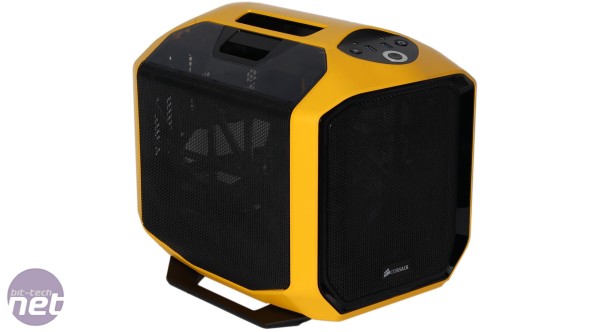
bit-tech: But, now more than ever, you can have “this or that” designs. For example, rather than supporting a 3.5in drive and a long GPU you have a case where it's one or the other. Following that principle, you could support everything, just not everything at once, leaving the user free to prioritise without wasting space. Is this a viable way of reducing footprint whilst capturing a larger share of the market?
Michael: I completely agree with you that it needs thought like that. You need to be able to scale and build the frame modularly and I think that's one of the weaknesses Corsair has had in the past. We haven't had a good “Tetriser”, somebody who knows how to fit everything inside of a case in a layered manner. Most of our big cases are designed such that you don't have to care about the procedure because it's big enough. That's one of the things I'm trying to do as I get into this role. It may make the installation process more complicated but it also allows us to get more out of the chassis and its components. It allows us to do more with less.
bit-tech: Does that mean we'll start seeing a more modular Corsair?
Michael: Yes. It's going to be a focus for our cases going forward – being able to scale well. Say you want to have a 360mm radiator mounted in the front, you could have either that or a 5.25in drive but not both. It allows us to make the chassis smaller, still accommodating basically anything that anybody wants to do but they have to make a decision. We're trying to get away from where it's just bigger is better, if you can't tie knots tie lots, that sort of approach.
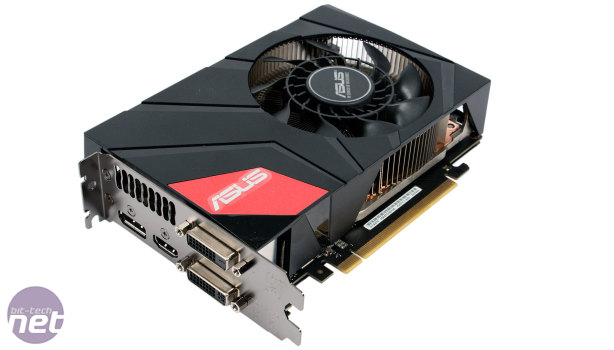
bit-tech: And this is an approach we'll see across the range?
Michael: Yeah, we're really going to focus on providing a better experience and an easier build choice for people. It'll be easier for them to know what they can and cannot do and we'll have less cases. That's another one of the things I'm trying to simplify. Corsair has 31 cases right now, which makes it difficult to choose which one you like. The easiest way is to choose which one looks best but that may not be able to satisfy the customer’s internal requirements. I'm trying to do both at the same time – make cases that look great just in general but that are also modular enough on the inside that they can satisfy almost any customer's need.
bit-tech: Another thing I want to touch on is the idea that companies like Corsair are trying to create whole ecosystems, and presumably you want to make cases that support your own hardware. But does this mean, for example, a case that has no AIO support at all would be totally off the cards from the get-go? How are the requirements decided?
Michael: We have a great instance of that. With Bulldog, we decided on the internal frame and layout before the outside. But there was no place for an AIO cooler, so we had to invent one, the H5 SF, to fit that form factor requirement. That's an instance of where the chassis dictated what sort of cooler goes in it. For a typical case though, we always design all of our cases, the ATX and micro-ATX ones at least, with having an AIO inside at some point. But for newer cases, we're taking the approach of designing the best cooling solution for every single case regardless of the form factor. I would look towards having more unique cooling solutions for cases because we're going to design a better product by having them integrated.
bit-tech: But if you're making something that only supports your stuff, you risk limiting yourself. A perfect example would be when the 250D couldn't even fit a H100i GTX, let alone other after-market coolers, because it was originally designed for the thinner H100i. Is that just a one off?
Michael: That really is a one off. When we test coolers there's a list of chassis they have to fit and the 250D just wasn't in that list. That was a sort of, 'our bad'. We had already released the H100i GTX a month and a half before we realised it but we will fix that going forward with new coolers. The testing has become more exhaustive because of that particular occurrence of non-compliance of our own products.
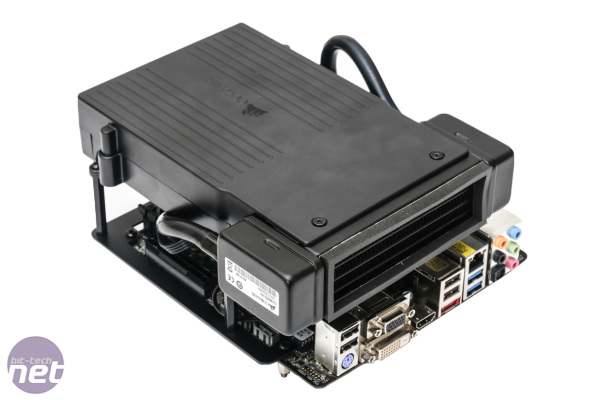
bit-tech: But is there a risk when you're designing like this that your own other product lines are limiting the creativity or at least the direction you can go in?
Michael: Yes, there is. Which is why we try to let each product line have its own creativity. If I design the most ridiculously awesome cooler on the planet but it doesn't fit in any of our cases, I'm going to design a case that it fits in. That's the mentality – if the sole product itself is so good that it dictates having its own supporting team of products, we're going to do it. That's a lot of the reason why we have an SFX PSU – we can support better products. And if we were to design a unique power supply that's even smaller than SFX to support an even smaller, more unique form factor, we're willing to do it if we feel like the product really needs it.
bit-tech: Going back to the Ncase M1, is something on that scale even feasible for Corsair given the need to support the AIOs? If someone with the design skills and the ability to mass produce could make a premium case on that level, it could be a real game-changer.
Michael: Yeah, and we've looked at that and we are working on that. It is possible, it's very possible. It's only possible because of the SFX power supply and also our experience with liquid-cooling. From an efficiency standpoint, liquid-cooling is superior to air cooling in basically every metric. It allows us to go small without sacrificing any sort of power or noise and bring the teams together. You may not believe it, but maybe over a year ago the teams within Corsair didn't really talk to each other. And you'd get problems like on the 900D our power supply cables aren't long enough to reach the 8-pin for the CPU. But when you start thinking together it allows you a certain flexibility to create the right product as opposed to doing the best you can with what you've got.
Michael: I think so. And it's because they can do what we cannot. When we produce a case, we have to sell 100,000 of them a year, minimum. But Ncase is different. I love the M1 – it's very well thought out, beautifully designed and a very smart case but it's $200 because they can only produce 500 a month. Before I started at Corsair, when I was looking to build a system, that was going to be the case I built in. Either that or an Akasa passive case. And yeah, there's not a whole lot out there that's cheap. If Ncase could make 5,000 M1s a month, I'm sure they could sell that for about $100, maybe $120. But yeah, they're definitely responding to an unmet need from the larger case manufacturers.

The Ncase M1
bit-tech: Why haven't the bigger companies stepped up then?
Michael: The problem with designing a mini-ITX case is it has to be great for everybody and that's not something that's easy. It takes a lot of time and effort and since the industry is moving so quickly in the mini-ITX space it's a moving target too. ITX is small but it's seeing the most evolution because the pursuit of small and small-powerful is so much more compelling to the users than it is for your standard case purchaser who just wants to put their stuff in it.
bit-tech: Why does it have to please everyone? Because the market is so small?
Michael: Yes, that is really what it is. We can't go after 10 percent of 10 percent. We would have to go after 50-90 percent for it to make sense for us. But by doing that you make compromises that make it difficult to please as many people as possible... So it's upping the ante by saying, 'I want to please everybody but I don't want to make it big by pleasing everybody.'

bit-tech: But, now more than ever, you can have “this or that” designs. For example, rather than supporting a 3.5in drive and a long GPU you have a case where it's one or the other. Following that principle, you could support everything, just not everything at once, leaving the user free to prioritise without wasting space. Is this a viable way of reducing footprint whilst capturing a larger share of the market?
Michael: I completely agree with you that it needs thought like that. You need to be able to scale and build the frame modularly and I think that's one of the weaknesses Corsair has had in the past. We haven't had a good “Tetriser”, somebody who knows how to fit everything inside of a case in a layered manner. Most of our big cases are designed such that you don't have to care about the procedure because it's big enough. That's one of the things I'm trying to do as I get into this role. It may make the installation process more complicated but it also allows us to get more out of the chassis and its components. It allows us to do more with less.
bit-tech: Does that mean we'll start seeing a more modular Corsair?
Michael: Yes. It's going to be a focus for our cases going forward – being able to scale well. Say you want to have a 360mm radiator mounted in the front, you could have either that or a 5.25in drive but not both. It allows us to make the chassis smaller, still accommodating basically anything that anybody wants to do but they have to make a decision. We're trying to get away from where it's just bigger is better, if you can't tie knots tie lots, that sort of approach.

bit-tech: And this is an approach we'll see across the range?
Michael: Yeah, we're really going to focus on providing a better experience and an easier build choice for people. It'll be easier for them to know what they can and cannot do and we'll have less cases. That's another one of the things I'm trying to simplify. Corsair has 31 cases right now, which makes it difficult to choose which one you like. The easiest way is to choose which one looks best but that may not be able to satisfy the customer’s internal requirements. I'm trying to do both at the same time – make cases that look great just in general but that are also modular enough on the inside that they can satisfy almost any customer's need.
bit-tech: Another thing I want to touch on is the idea that companies like Corsair are trying to create whole ecosystems, and presumably you want to make cases that support your own hardware. But does this mean, for example, a case that has no AIO support at all would be totally off the cards from the get-go? How are the requirements decided?
Michael: We have a great instance of that. With Bulldog, we decided on the internal frame and layout before the outside. But there was no place for an AIO cooler, so we had to invent one, the H5 SF, to fit that form factor requirement. That's an instance of where the chassis dictated what sort of cooler goes in it. For a typical case though, we always design all of our cases, the ATX and micro-ATX ones at least, with having an AIO inside at some point. But for newer cases, we're taking the approach of designing the best cooling solution for every single case regardless of the form factor. I would look towards having more unique cooling solutions for cases because we're going to design a better product by having them integrated.
bit-tech: But if you're making something that only supports your stuff, you risk limiting yourself. A perfect example would be when the 250D couldn't even fit a H100i GTX, let alone other after-market coolers, because it was originally designed for the thinner H100i. Is that just a one off?
Michael: That really is a one off. When we test coolers there's a list of chassis they have to fit and the 250D just wasn't in that list. That was a sort of, 'our bad'. We had already released the H100i GTX a month and a half before we realised it but we will fix that going forward with new coolers. The testing has become more exhaustive because of that particular occurrence of non-compliance of our own products.

bit-tech: But is there a risk when you're designing like this that your own other product lines are limiting the creativity or at least the direction you can go in?
Michael: Yes, there is. Which is why we try to let each product line have its own creativity. If I design the most ridiculously awesome cooler on the planet but it doesn't fit in any of our cases, I'm going to design a case that it fits in. That's the mentality – if the sole product itself is so good that it dictates having its own supporting team of products, we're going to do it. That's a lot of the reason why we have an SFX PSU – we can support better products. And if we were to design a unique power supply that's even smaller than SFX to support an even smaller, more unique form factor, we're willing to do it if we feel like the product really needs it.
bit-tech: Going back to the Ncase M1, is something on that scale even feasible for Corsair given the need to support the AIOs? If someone with the design skills and the ability to mass produce could make a premium case on that level, it could be a real game-changer.
Michael: Yeah, and we've looked at that and we are working on that. It is possible, it's very possible. It's only possible because of the SFX power supply and also our experience with liquid-cooling. From an efficiency standpoint, liquid-cooling is superior to air cooling in basically every metric. It allows us to go small without sacrificing any sort of power or noise and bring the teams together. You may not believe it, but maybe over a year ago the teams within Corsair didn't really talk to each other. And you'd get problems like on the 900D our power supply cables aren't long enough to reach the 8-pin for the CPU. But when you start thinking together it allows you a certain flexibility to create the right product as opposed to doing the best you can with what you've got.

MSI MPG Velox 100R Chassis Review
October 14 2021 | 15:04

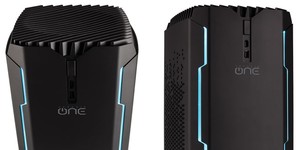






Want to comment? Please log in.